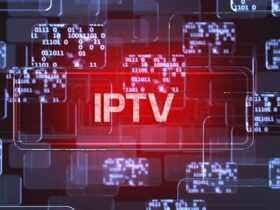
The television industry has undergone significant transformations over the past few decades, with Internet Protocol Television (IPTV) emerging as a notable disruptor to traditional cable TV. IPTV, which delivers TV content via the internet rather than through traditional cable networks, has had profound effects on how viewers access and consume television. This blog post explores the top five impacts of IPTV on traditional cable TV.
Visit this website for IPTV services:
1. Enhanced Flexibility and Personalization
One of the most significant impacts of IPTV on traditional cable TV is the enhanced flexibility and personalization it offers. IPTV services allow viewers to access content on-demand, which contrasts sharply with the fixed programming schedules of traditional cable TV. This means that users can watch their favorite shows whenever they want, rather than adhering to a broadcast schedule.

Moreover, IPTV platforms often come with sophisticated recommendation algorithms that suggest content based on viewers’ preferences and viewing history. This level of personalization is typically lacking in traditional cable TV, where channel offerings are standardized and less tailored to individual tastes. The ability to curate and personalize content enhances the viewing experience, making it more relevant and engaging for the audience.
2. Cost-Effectiveness and Pricing Models
IPTV has introduced more flexible and cost-effective pricing models compared to traditional cable TV. Cable TV often requires long-term contracts and expensive monthly fees for access to a broad range of channels, many of which viewers may never watch. In contrast, IPTV services frequently offer a variety of pricing options, including pay-per-view, subscription packages, and even free ad-supported models.To enjoy the IPTV services in economical prices click here:
These varied pricing structures allow consumers to choose plans that best fit their needs and budgets. Additionally, the lack of a physical infrastructure requirement for IPTV—such as the installation of cable lines—further reduces costs for providers and can translate into savings for consumers. This shift towards more consumer-friendly pricing models has pressured traditional cable providers to rethink their pricing strategies and offer more competitive packages.
3. Technological Advancements and Integration
The technological advancements associated with IPTV have influenced the development and integration of new features that are not typically available with traditional cable TV. IPTV platforms often leverage high-definition (HD) and ultra-high-definition (4K) streaming technologies, offering superior picture and sound quality compared to standard cable broadcasts.
Additionally, IPTV services frequently support multi-device access, allowing users to stream content on various devices such as smartphones, tablets, smart TVs, and laptops. This cross-device compatibility enables a seamless viewing experience that traditional cable TV, which is generally confined to the home television set, cannot match. The integration of interactive features, such as live chats, social media sharing, and app integration, further enriches the viewing experience, creating a more dynamic and engaging environment.
4. Content Diversity and Availability
IPTV has significantly expanded the diversity and availability of content compared to traditional cable TV. Traditional cable TV packages are often limited by geographic region and available channel offerings, which can result in a lack of variety and access to niche interests. IPTV, on the other hand, provides access to a global content library, enabling viewers to explore a vast array of programming from different countries and cultures.
This global reach allows for a more diverse selection of content, including international shows, films, and specialized programming that may not be available through traditional cable channels. IPTV platforms often include content from streaming services, on-demand libraries, and independent creators, contributing to a richer and more varied media landscape.
5. Impact on Traditional Cable TV Providers
The rise of IPTV has had a direct impact on traditional cable TV providers, forcing them to adapt and innovate to remain competitive. Many cable companies have begun to offer their own IPTV services or hybrid models that combine traditional cable with internet-based streaming options. This shift reflects an industry-wide recognition of the need to evolve in response to changing consumer preferences and technological advancements.
Furthermore, the competition from IPTV has prompted cable providers to improve their customer service, enhance their content offerings, and reconsider their pricing strategies. This competitive pressure benefits consumers by driving improvements in service quality and affordability across the board.
Conclusion
The impact of IPTV on traditional cable TV is profound and multifaceted. IPTV has introduced greater flexibility and personalization, more cost-effective pricing models, advanced technology, a wider array of content, and competitive pressures that have reshaped the television industry.

To enjoy the IPTV services in economical prices click here:
As IPTV continues to grow and evolve, it is likely to drive further changes in how television content is delivered and consumed, offering exciting possibilities for both viewers and providers alike.









Leave a Reply